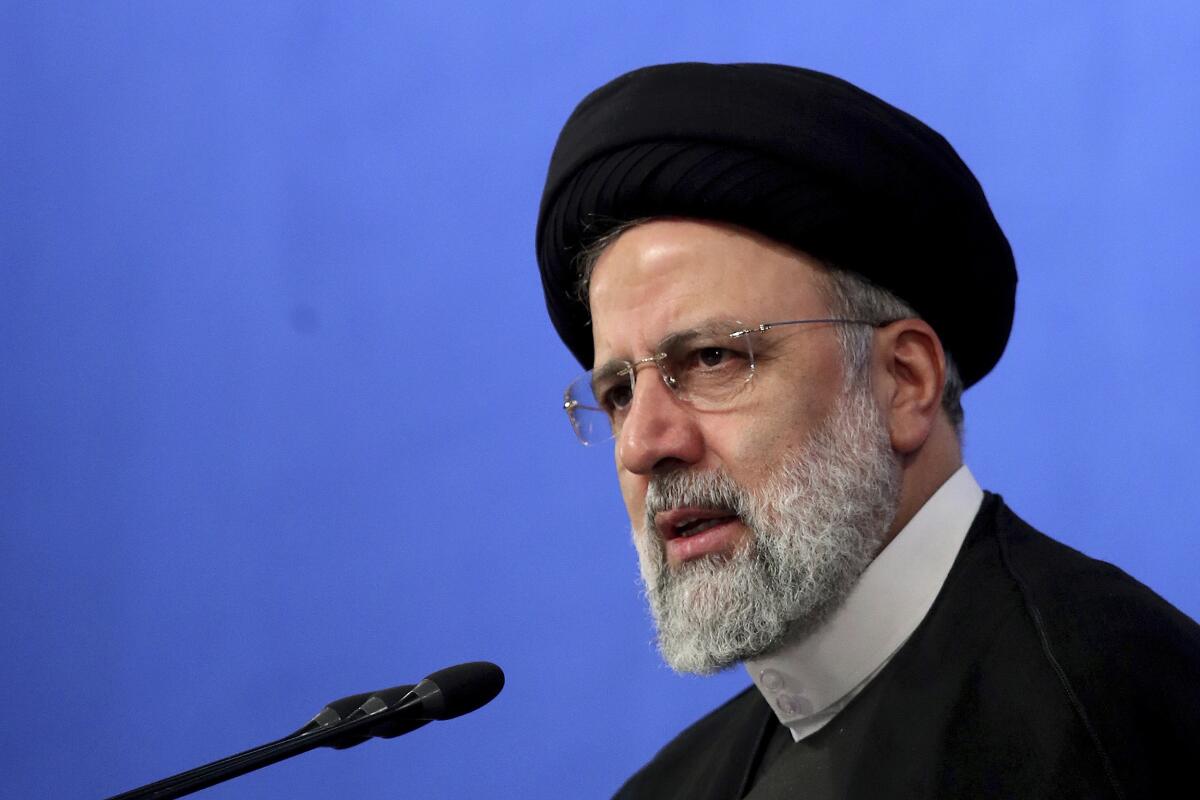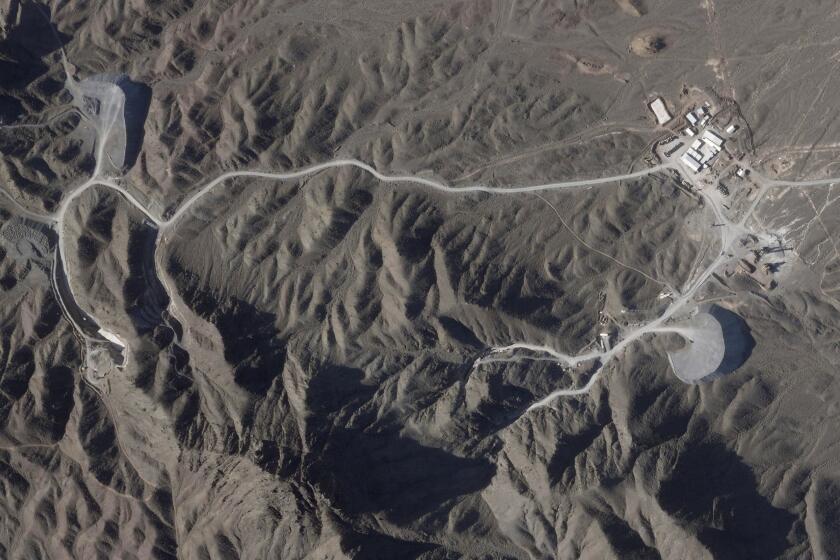Confidential U.N. nuclear watchdog report: Iran slows enrichment of near-weapons-grade uranium

- Share via
VIENNA — Iran has slowed the pace at which it is enriching uranium at nearly weapons-grade levels, a confidential report by the United Nations’ nuclear watchdog says. That could be a sign Tehran is trying to ease tensions after years of strain between it and Washington.
The report, seen Monday by the Associated Press, comes as Iran and the United States are negotiating a prisoner swap and the release of billions of dollars in Iranian assets frozen in South Korea. However, international inspectors also noted new challenges in trying to monitor Iran’s program.
In an effort to ensure Iran could not develop atomic weapons, world powers struck a deal with Tehran in 2015 under which it agreed to limit enrichment of uranium to levels necessary for nuclear power in exchange for the lifting of economic sanctions. U.N. inspectors were tasked with monitoring the program.
Then-President Trump unilaterally pulled the U.S. out of the accord in 2018, saying he would negotiate a stronger deal, but that didn’t happen. Iran began breaking the terms a year later.
The International Atomic Energy Agency said in its report that Iran has 268 pounds of uranium enriched up to 60%. That means its stockpile of the fuel is growing at its slowest pace since 2021. A report in May put the stockpile of 60% uranium at slightly more than 250 pounds. Iran had 192 pounds in February.
Uranium enriched at 60% purity is just a short technical step away from weapons-grade levels of 90%. Iran has maintained that its program is peaceful, but the IAEA’s director-general has warned Tehran has enough enriched uranium for “several” nuclear bombs if it chose to build them.
In central Iran, workers are building a nuclear facility so deep in the earth that it is likely beyond the range of so-called ‘bunker buster’ bombs.
Iran’s mission to the United Nations in New York did not immediately respond to a request for comment Monday.
Tehran probably would still need months to build a weapon. U.S. intelligence agencies said in March that Tehran “is not currently undertaking the key nuclear weapons-development activities that would be necessary to produce a testable nuclear device.” The IAEA, the West and other countries say Iran had a secret military nuclear program that it abandoned in 2003.
Overall, the IAEA report estimated Iran’s total enriched uranium stockpile at 8,367 pounds. That’s a drop from the last IAEA report, which put the stockpile at 10,459 pounds. The stockpile reportedly declined because Iran diluted some of its enriched uranium.
President Biden has said he’d be willing to reenter a nuclear deal with Iran, but formal talks to try to find a way to restart the deal collapsed in August 2022. Since then, Oman and Qatar have mediated indirect talks between Iran and the U.S. that led to the current planned prisoner swap and asset release.
The U.S.-orchestrated coup in 1953 ousted Iranian Prime Minister Mohammad Mossadegh. Its legacy remains contentious and complicated for Iranian authorities and its people.
Under that proposal, $6 billion to $7 billion, depending on exchange rates, would be changed from South Korean won into euros. The cash represents money South Korea owed Iran — but had not yet paid — for oil purchased before the Trump administration imposed sanctions on such transactions in 2019.
The U.S. maintains that, once in Qatar, the money will be held in restricted accounts and that Iran will be able to use it only for humanitarian goods such as medicine and food. Those transactions are currently allowed under U.S. sanctions targeting the Islamic Republic over its nuclear program.
In exchange, Iran would release five Iranian American prisoners now under house arrest. The U.S. probably will release Iranian prisoners as well, though those details remain murky. If that deal goes through, it could improve the chances of overall talks on the nuclear deal resuming — though Biden already faces strident criticism from Republicans and others over the prisoner swap.
While Iran has slowed the enrichment, the IAEA reported other problems with trying to monitor its program. The report from the watchdog said Iran had denied visas for agency officials and affected their ability to work in other ways as well.
Breaking News
Get breaking news, investigations, analysis and more signature journalism from the Los Angeles Times in your inbox.
You may occasionally receive promotional content from the Los Angeles Times.
Iran has not acknowledged the visa denials.
The IAEA also hasn’t been able to access surveillance camera video since February 2021 under Iranian restrictions, while the only recorded data since June 2022 have been from cameras at a workshop in the Iranian city of Isfahan.
The watchdog also said that no progress had been made on its request that Iran explain the origin and current location of man-made uranium particles found at two locations that Tehran has failed to declare as potential nuclear sites.
More to Read
Sign up for Essential California
The most important California stories and recommendations in your inbox every morning.
You may occasionally receive promotional content from the Los Angeles Times.












